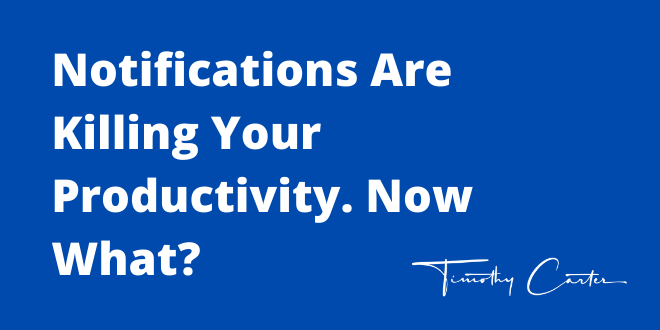
Getting in the Habit: How to Dominate Your Goals Like a Boss
February 27, 2024
Crushing Life: Creating Wealth in Today’s World
February 28, 2024Most entrepreneurs wish they were better at managing their time. There are only eight hours in a standard work day, but it feels like you have 20 hours worth of tasks to do every day.
There are many legitimate solutions to this dilemma. One of the most valuable strategies is learning to delegate effectively to reduce your total workload. You can also automate certain tasks so you no longer have to actively manage them.
But once you’ve used all these tactics, you’ll be left with only one real solution to optimize your productivity: time management. Only by better managing your time will you be able to accomplish the greatest number of tasks in a day.
There are plenty of pieces of advice floating around about effective time management, but some of them are contradictory, and some are downright counterintuitive. I’ve found one of the most important approaches to time management — and a recurring source of higher productivity — is rooted in a simple concept: relying on smaller time blocks.
How time blocks work
In case you aren’t familiar, “time blocks” are intervals of time that you can use to schedule tasks, or groups of tasks, for your workday. Most people use blocks of an hour or half an hour to block out time throughout the day. For example, they might dedicate an hour to a morning meeting, half an hour to catching up on emails, half an hour for a client meeting and an hour for a heads-down project.
This system is effective because it helps you estimate the amount of time each task takes, helps you group similar tasks together and allows you to set priorities for your day proactively.
The problem is, if you’re only using blocks of 30, 45 or 60 minutes, you won’t be getting the full benefits of the strategy. Instead, you should be working with much shorter intervals — like 10 minutes, or even five minutes (a strategy famously used by Elon Musk).
Why are smaller time blocks so effective?
Countering Parkinson’s Law
One of the biggest benefits of using smaller time blocks is that they allow you to counteract the effects of Parkinson’s Law. In case you aren’t familiar, Parkinson’s Law is an informal adage that states that work has a tendency to expand to fill whatever time was allocated for it. In other words, if you schedule a task to take an hour, it will probably take an hour — or nearly an hour. But if you impose tighter time restraints, you’ll naturally be inclined to finish the task faster.
This is especially helpful for things like meetings, which suffer from lax scheduling approaches. Instead of blocking out 30 minutes, consider blocking out 20 or 25; chances are, you won’t notice much of a difference, but you’ll instantly free up more time for your day.
Specificity and awareness
Smaller time blocks are also much more specific than their larger counterparts, allowing you to estimate and measure your time expenditure with more precision. This, in turn, allows you to zoom in on the tasks that are eating up your day and identify sources of time waste more easily. The more aware you are about how you’re spending your time, the more effectively you’ll be able to change your habits and work environment.
Control over breaks
Tighter time intervals also opens the door to an oft-neglected productivity booster: breaks. Breaks are shown to have a measurable positive effect, both reducing stress and increasing productivity, and should be taken throughout the day. The trouble is, when we feel overwhelmed with work, breaks feel like an impossibility (or a symptom of laziness). That said, if you can schedule a meeting for 55 minutes (instead of a full 60) or a project for 20 minutes (instead of a full 30), you’ll open up micro-intervals where breaks can fit naturally. You can also schedule breaks with greater regularity and experiment with length and placement. Eventually, you’ll find a break rhythm that supports your productivity without distracting you, and none of your other priorities will suffer from the change.
Issues with the strategy
None of this is to say that small time blocks are a perfect strategy, or that they’re guaranteed to work for every individual. There are some issues with the strategy. For starters, planning your day in five-minute intervals takes much more time than planning it in one-hour chunks. Additionally, there are more contingencies and dependencies to worry about; if a five-minute task takes 10 minutes, suddenly the rest of your day is going to be pushed back. And of course, this strategy is going to work better for some types of workers than it is for others.
Still, most of these downsides can be compensated for. For example, if you’re worried about too many dependencies, you can build in small buffers where you can catch up your work. If you’re the type of person who struggles with conventional approaches to time management, give this strategy a try and see if it works better for you. You might be surprised at the results.
FAQ Section:
1. How can I transition from traditional hour-long time blocks to smaller intervals like five or ten minutes without feeling overwhelmed or scattered?
Transitioning to smaller time intervals requires a gradual adjustment. Start by breaking down larger tasks into smaller subtasks and allocating specific time intervals to them. Prioritize tasks based on urgency and importance, focusing on one task at a time within these smaller blocks. Over time, refine your approach and develop a rhythm that works best for you.
2. Are there specific types of tasks or industries where utilizing smaller time blocks for time management may be less effective or impractical?
Yes, the effectiveness of smaller time blocks may vary depending on task complexity and industry requirements. Tasks requiring deep focus or complex problem-solving may not be suitable for very short intervals. Similarly, industries with highly structured workflows may find it challenging to incorporate smaller time blocks due to specific protocols or procedures. Adapt by identifying tasks that can be broken down while ensuring critical processes are not compromised.
3. How can I ensure that breaks within smaller time blocks remain productive and do not lead to distractions?
To maintain productive breaks, set clear boundaries such as limiting the use of electronic devices or engaging in activities that promote relaxation. Structure breaks around specific intervals, such as after completing tasks or reaching milestones. Experiment with different break durations and activities to find what works best for you, ensuring that breaks enhance overall productivity without detracting from task completion.





